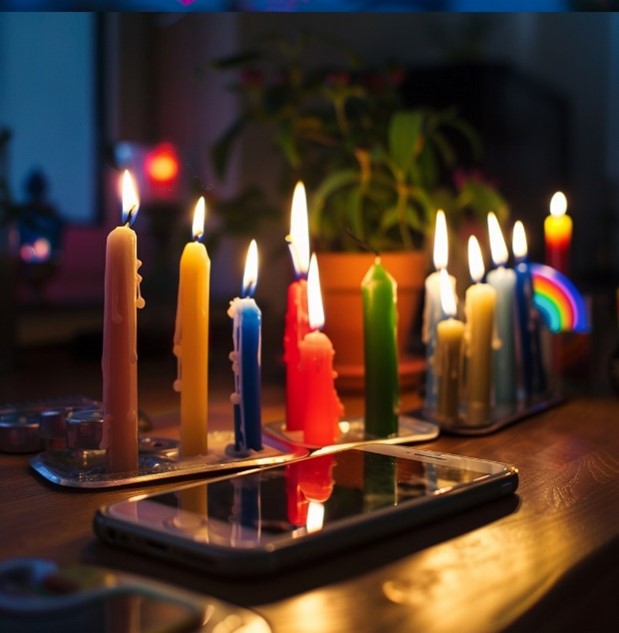We need to get more involved with our e-waste

To motivate consumers to buy fewer electronic devices, to use them longer and to return them when they are really finished, their behaviour needs to be changed. History, other cultures and even grieving processes teach us that more visibility and community spirit increase people’s involvement and reduce negative feelings. That is the conclusion of a study conducted by Flora Poppelaars and Andische Azad for the Horizon Europe project INCREACE. They presented their insights at the Electronic Goes Green conference in Berlin.
Most theories about behaviour change assume that people are primarily rational individuals. So, if you just create the possibility to have electronic and electrical equipment repaired, returned or collected, and make them aware of the existence of this possibilities, consumers will automatically do so. That is not the case. People do not always act rationally: they find it too much hassle, they prefer to keep them in a drawer because you never know, or they will throw them in the residual waste bin.
Acting out of habit
More is needed to change behaviour. Practice theory and the practices-oriented design approach developed by Lenneke Kuijer of the Eindhoven University of Technology offer starting points for this, according to Flora Poppelaars of Partners for Innovation and Andische Azad of Fraunhofer IZM. This design approach considers behaviour change at a collective level by focusing on the interaction between society and individuals. The key concept is that people are complex beings, they do not act linearly and predictively over time. They act much more from emotion and habit and the interaction with their environment has a major influence on this. People often behave according to certain practices: they exhibit routine behaviour, such as cooking and showering. This routine behaviour consists of a complex interplay of stuff, images and skills.
We can learn from history and traditions
The practices-oriented design approach offers the possibility of building other routines and thus gaining positive experiences with the collection of electronics, for example. How? By learning from history, other cultures and grieving processes.
Throughout the centuries, people have dealt with production and waste very differently. From the 14th to the 17th century, the entire community was closely involved in the production, use and waste of products. In full view of everyone, animals, trees, crops and clay were manually processed into the necessary food and building materials. It was used sparingly and the residual material was returned to the animals or the land. Raw materials and waste had a value.
Since then, production and waste have become increasingly distant from people due to industrialisation, efficiency, hygiene and because the government took over the collection and processing of waste. Production now mainly takes place out of sight of end users and products are relatively cheap. Waste often no longer has any perceived value. In fact, waste is mainly a dirty, ”unavoidable burden” that you do not want to have anything to do with. That makes people passive. However, that does not necessarily have to be the case. By making waste an integral part of life again, you can make people active participants again.
Communal resource management
In some other cultures, the change has already been achieved. A striking example is Kamikatsku, a village in Japan. There, the municipality has succeeded in connecting people with each other and with their products. The municipality has created a Zero-Waste Centre where people can separate no fewer than 45 different waste streams. And there is a thrift store where people can get products for free and where reusable and recycled products are on display. After initial resistance, the community is now motivated to actively contribute to the emission-free city. Waste is no longer an individual problem to be gotten rid of as quickly as possible, but an opportunity for shared management of raw materials.
Appreciation and gratitude
Even grieving processes can help us to give our view of waste a more positive spin. By not hiding the farewell to loved ones but organising it in a respectful way, with new rituals and community involvement, a feeling of appreciation and gratitude is created. The parallel with a divorce, a move or a new job is slightly less loaded: a valuable farewell to the old also means more appreciation for what has been. For example, you could personify products in order to treat them respectfully at the end of their life cycle.
Starting points for designers
The insights from applying Kuijer’s design approach based on practice theory offer interesting starting points for designers, manufacturers of electronic and electrical equipment and governments to fundamentally change consumer behaviour. New rituals are needed to show and feel that we only should purchase electronics and appliances that we really need, that we want to care for and that we want to give a second life to.
Curious about the entire paper? Please contact Flora Poppelaars. She coordinates Workpackage 5 – Circular Society – of the European project INCREACE to increase the share of recycled plastics in electrical and electronic appliances.
Want to
know more?
Contact us!


